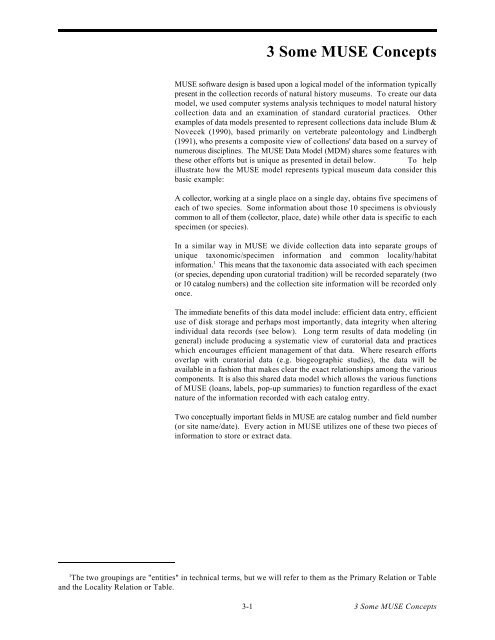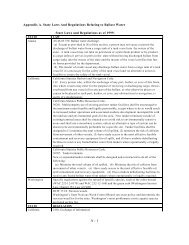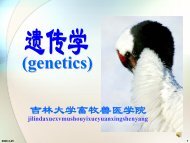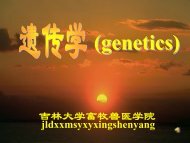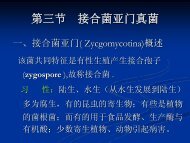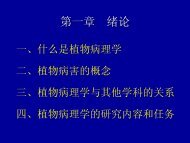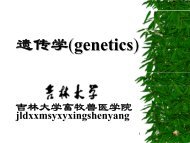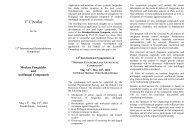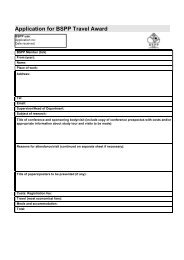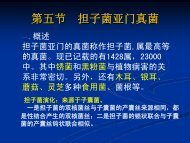Create successful ePaper yourself
Turn your PDF publications into a flip-book with our unique Google optimized e-Paper software.
1The<br />
two groupings are "entities" in technical terms, but we will refer to them as the Primary Relation or Table<br />
and the Locality Relation or Table.<br />
3-1<br />
3 Some MUSE Concepts<br />
MUSE software design is based upon a logical model of the information typically<br />
present in the collection records of natural history museums. To create our data<br />
model, we used computer systems analysis techniques to model natural history<br />
collection data and an examination of standard curatorial practices. Other<br />
examples of data models presented to represent collections data include Blum &<br />
Novecek (1990), based primarily on vertebrate paleontology and Lindbergh<br />
(1991), who presents a composite view of collections' data based on a survey of<br />
numerous disciplines. The MUSE Data Model (MDM) shares some features with<br />
these other efforts but is unique as presented in detail below. To help<br />
illustrate how the MUSE model represents typical museum data consider this<br />
basic example:<br />
A collector, working at a single place on a single day, obtains five specimens of<br />
each of two species. Some information about those 10 specimens is obviously<br />
common to all of them (collector, place, date) while other data is specific to each<br />
specimen (or species).<br />
In a similar way in MUSE we divide collection data into separate groups of<br />
unique taxonomic/specimen information and common locality/habitat<br />
1 information. This means that the taxonomic data associated with each specimen<br />
(or species, depending upon curatorial tradition) will be recorded separately (two<br />
or 10 catalog numbers) and the collection site information will be recorded only<br />
once.<br />
The immediate benefits of this data model include: efficient data entry, efficient<br />
use of disk storage and perhaps most importantly, data integrity when altering<br />
individual data records (see below). Long term results of data modeling (in<br />
general) include producing a systematic view of curatorial data and practices<br />
which encourages efficient management of that data. Where research efforts<br />
overlap with curatorial data (e.g. biogeographic studies), the data will be<br />
available in a fashion that makes clear the exact relationships among the various<br />
components. It is also this shared data model which allows the various functions<br />
of MUSE (loans, labels, pop-up summaries) to function regardless of the exact<br />
nature of the information recorded with each catalog entry.<br />
Two conceptually important fields in MUSE are catalog number and field number<br />
(or site name/date). Every action in MUSE utilizes one of these two pieces of<br />
information to store or extract data.<br />
3 Some MUSE Concepts


